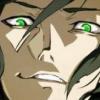Ghost in the Shell 2 : Man-Machine Interface
Ghost is the Shell 2 is not a complete continuation of the previous manga. Masamune Shirow planned it be a standalone work but still feel like a semi-sequel. The original story was pretty much complete and it’s welcoming to see a fresh story. It opens the way to explore some new but equality interesting ideas. Shirow even planned to change one of the title kanji to indicate a slight difference between this and the previous work.
“I would also like to thank the people, who have waitd for 10 years. Thank you so much.” Masamune Shirow.
Ghost in the Shell marked Shirows entry into the world of computer artistry and allowed him to experiment with different software, coloring, and composition techniques. Technology however did not make it easy on him with hard disc failures and gigs of lost data, hardware connectivity problems, application upgrades and other countless troubles he had to struggle through the long running production of this work. It is almost a real life meta narrative of technological deficiency and ineffectiveness to liberate human lives and instead forming more problems than solutions it supposedly attempts to provide.
Once again Shirow goes into the most interesting minute details of technology, cyberpunk, human condition and political state of the world. There are corporations that accept specific genes from their customers and grow for them special donor pigs in case a customer needs an emergency organ transplant. The organs harvested from pigs are of no danger of being rejected by the human immune system. The genes are taken while the person is young in an attempt to preserve healthy cells and prevent a programmed cellular death problem which arises from older aged genes. Other methods of human organs manufacturing exist without human-pig gene splicing but they are not as efficient and commercially profitable.
Presentation is even more overwhelming this time around than ever before with so much going on in each panel it is sometimes difficult to catch a breath from one panel to the next. Half the manga is filled with reality augmented holographic graphical user interface displays. The cyber world and the real world switch and blend at will with no clear way to identify which is which and who is who to a point that it leads to some really interesting thought provoking themes as even the reader struggles to see the reality where the action is taking place. There are layer matrix coated material display glasses that can disturb from the light to enter or exit the room. The glass has an internal micro vibration operation to prevent from a leaser beamed eavesdropping devices spying on the occupants of the said room. Even just a simple ride on a boat is the most cyberpunkies thing ever presented in any medium.
The story this time around takes place around a much shorter timeframe and is much more condensed with information, even more than the first manga if that is even possible to do. But like the original Shirow fills the pages with some interesting and funny commentary between the panels and sides of the pages. These commentaries talk about a variety of things like, the reason a cyborg has bubbles underwater if it doesn’t breath air, or why would a remote controlled humanoid terminal wear underwear. It’s all fun and interesting to read and once again shows how much depth and research Shirow put into this work.
The themes and concepts of duality from the original work return and are explored in this work as well. The duality of the mind and soul connected but also disconnected forms of world views as each influences and reacts to the other. Their paths cross at an asymmetrical constantly shifting and changing mirror of reality and non-reality. One cannot exist without the other, perhaps humans cannot exist without technology anymore or technology is unable to exist without humanity. Shirow drew his ideas from various people and even going so far as naming the work after the writings of Gilbert Ryle and Arthur Koestler. The text is dense, the dialogue is long, the writing is convoluted, the narrative suffers from too much stuff going on and yet at the same time it somehow works pulling the reader in and impossible to down.




0 Comments
Recommended Comments
There are no comments to display.